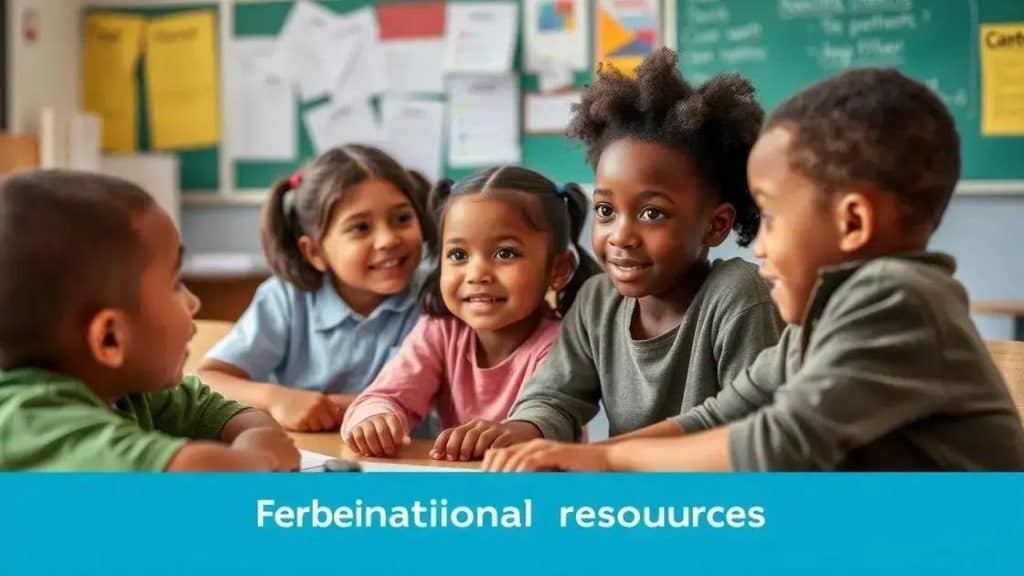Student loan forgiveness programs for teachers explained

Anúncios
Student loan forgiveness programs for teachers provide financial relief through various options, such as Public Service Loan Forgiveness and Teacher Loan Forgiveness, enabling educators to alleviate debt while advancing their careers.
Student loan forgiveness programs for teachers offer significant relief to many educators facing debt. Have you considered how these programs could change your financial future? Exploring these options might reveal paths you didn’t even know existed.
Anúncios
Understanding student loan forgiveness for teachers
Understanding student loan forgiveness for teachers is essential for educators who want to alleviate their financial burdens. These programs are designed to help teachers manage their debt more effectively. If you’re a teacher, exploring these options could potentially reduce your loan payments significantly.
What is Student Loan Forgiveness?
Student loan forgiveness refers to the cancellation of some or all of your student loans. For teachers, this can mean a huge financial relief, especially if you have dedicated years to serving in a qualifying position.
Anúncios
Eligibility Requirements
To qualify for forgiveness, you need to meet certain requirements. Here are some key factors:
- Employment in a qualifying school or field.
- Number of years served in a teaching position.
- Type of loan you have and its repayment plan.
Being aware of these requirements is crucial to understanding your eligibility for forgiveness. Many teachers may not realize they qualify, so checking your status can save you a lot of money.
Types of Forgiveness Programs
There are various programs available that cater specifically to teachers. Some popular options include:
- Public Service Loan Forgiveness (PSLF)
- Teacher Loan Forgiveness
- Income-Driven Repayment Plan Forgiveness
Each program has unique features and benefits. To find the one that suits you best, it’s important to research each option carefully. Depending on your teaching situation, one program might be more beneficial than another.
Applying for loan forgiveness can seem daunting, but breaking it down into steps can make the process easier. Start by gathering all necessary documents, including your employment certification and loan information. Make sure to file your application within the required timelines to avoid any issues.
In conclusion, understanding student loan forgiveness for teachers can open doors to financial relief. By staying informed about your options and keeping track of requirements, you can take significant steps toward reducing your student debt.
Eligibility criteria for forgiveness programs

When considering eligibility criteria for forgiveness programs, it’s important to understand the specific requirements needed to apply. Many teachers might qualify for these programs without even realizing it. Ensuring that you meet the necessary criteria can help you take advantage of these significant benefits.
Common Eligibility Requirements
To be eligible for student loan forgiveness programs, teachers typically must fulfill certain conditions. Here are a few key factors that affect your eligibility:
- Employment at a qualified school or educational institution.
- Completion of a specified number of years of teaching service.
- Types of student loans you hold.
Understanding these factors is crucial. For example, teaching at a low-income school can enhance your chances for forgiveness. Additionally, your loan type will determine which programs you can apply for, such as the Public Service Loan Forgiveness or Teacher Loan Forgiveness.
Service Requirements
Most forgiveness programs require you to serve a minimum number of years. This period often ranges from five to ten years, depending on the program. Your service must be continuous, meaning any breaks in employment could affect your eligibility.
During your time as a teacher, maintaining accurate records is important. Documenting your service can provide necessary proof when applying for forgiveness. Keep track of your employment, loan details, and any certifications you may need.
It’s also essential to be aware of the deadlines and application procedures for these programs. Missing a deadline can delay your benefits, so be proactive about staying informed. By understanding the eligibility criteria for forgiveness programs, you can navigate the application process much smoother.
Steps to apply for forgiveness
Knowing the steps to apply for forgiveness can make a significant difference for teachers seeking relief from student loans. The application process may seem complicated, but breaking it down into clear steps can help you navigate it more easily.
Gather Required Documentation
The first step is to collect all the necessary documents. This includes your loan information, proof of employment, and any certifications of your teaching status. Having everything organized will speed up the process.
- Loan statements detailing your balance and payment history.
- Employment verification that confirms your teaching role.
- Certification from your school district if needed.
Once you have your documents ready, you can move to the next step smoothly.
Choose the Right Program
Not every forgiveness program is the same, so it’s crucial to pick the one that fits your situation. Research different programs like the Public Service Loan Forgiveness and Teacher Loan Forgiveness to find the best fit for you.
Each program has different requirements, so make sure you understand what is needed for each. This helps you avoid unnecessary delays later on.
Complete the Application
Filling out the application correctly is key. Make sure to follow the instructions carefully and provide all required information. Incomplete applications can lead to denial, so double-check your work before submission.
If you’re unsure about any part of the application, consider reaching out for guidance. Many organizations provide help for teachers applying for loan forgiveness.
Submitting your application on time is crucial. Be aware of any deadlines associated with the programs you have chosen. Mark these dates on your calendar to ensure you don’t miss them.
After submitting, keep track of your application status. Regularly check for updates and be prepared to respond to any requests for additional information.
Impact of forgiveness on your career

The impact of forgiveness on your career can be profound for teachers burdened with student loan debt. When you qualify for loan forgiveness, it can free you from financial stress, allowing you to focus on your students and career growth.
Improved Job Satisfaction
Relief from student loans often leads to improved job satisfaction. Teachers can feel more motivated and engaged in their work without the constant worry of debt. This positive emotional state can enhance their effectiveness in the classroom.
Opportunities for Advancement
With less financial pressure, teachers may feel more confident in pursuing leadership roles or continuing education. Participating in professional development can elevate your teaching skills and open doors for promotions.
- Access to special training workshops.
- Possibility of mentoring new teachers.
- Chance to take on administrative roles.
These opportunities can significantly enhance your career trajectory, benefiting both you and your students.
Networking Potential
Forgiveness programs may also enable teachers to expand their professional networks. When freed from financial concerns, educators can attend conferences and workshops, connecting with peers and experts in their field. Building relationships with fellow educators can lead to collaborative projects and sharing of best practices.
A strong professional network can provide support and inspiration, further fueling your passion for teaching and career growth.
Additionally, the financial relief can allow teachers to explore various teaching environments, such as working in low-income schools or taking on extra roles in educational nonprofits. These experiences not only enrich your career but can significantly impact the lives of the students you serve.
In summary, understanding the different avenues for student loan forgiveness can empower teachers to manage their debt more effectively. With the right programs, teachers can experience relief from financial burdens while enhancing their careers. By following the necessary steps to apply for forgiveness and recognizing the potential positive impacts on their professional lives, educators can create lasting change for themselves and their students. Remember, every bit of knowledge gained can lead to new opportunities and a brighter future in education.
FAQ – Frequently Asked Questions about Student Loan Forgiveness Programs for Teachers
What types of student loan forgiveness programs are available for teachers?
Teachers can apply for programs like the Public Service Loan Forgiveness, Teacher Loan Forgiveness, and Income-Driven Repayment Plan Forgiveness.
How do I know if I qualify for a forgiveness program?
You can check qualification criteria, such as years of teaching at a qualified school and type of loans, to see if you are eligible.
What documents do I need to apply for loan forgiveness?
You’ll need documentation like employment verification, loan statements, and potentially, certification from your school district.
How can loan forgiveness affect my career as a teacher?
Loan forgiveness can relieve financial pressure, leading to improved job satisfaction, greater career opportunities, and the ability to pursue further education.





